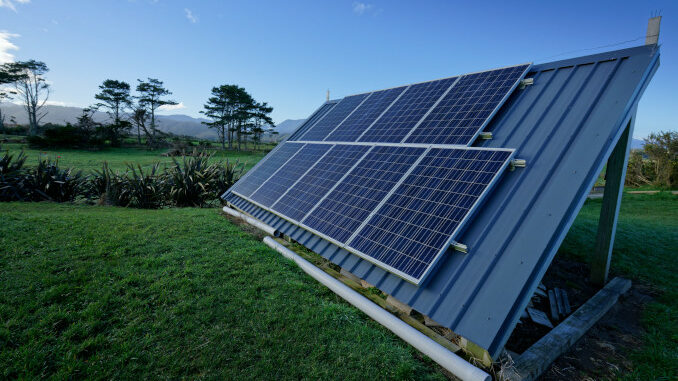
by: the Solari Staff
Introduction
Twenty years ago, installing your own Off-Grid Alternative Energy system of any type was totally unregulated. Those days are gone. If you live in a state that has a large Grid-Tie Solar program, then you should do your homework before embarking on any Off-Grid system. A few years ago, California went to the Off-Grid community in some counties and demanded that they shoulder the expense of running Grid Power to their homes. This included the massive expense of installing power lines. So, beware of local regulations and codes.
Note: I will be using the term kilowatts, where (Volts x Amps = Watts) and 1000 watts = 1kW. Your utility charges you by the kW/hr.
Prerequisites
There are two types of Alternative Energy technologies:
- Persistent
- Intermittent
As the terms imply, one is constant, while the other will only generate power when that resource is available.
Persistent Alternative Technologies include:
- Generator sets (aka “gensets”) fueled by: propane, natural gas, biodiesel, ethanol, methane from biogas, and biogas from pyrolysis of biomass or plastic waste
- Water turbines/wheels
- Geothermal (utility scale only)
- Ocean thermal energy conversion (OTEC) (ocean turbines/utility scale only)
Intermittent Alternative Technologies include:
- Wind turbines
- Solar photovoltaic (PV) panels
Where to start? Go to the NREL (National Renewable Energy Laboratory) and take a look at the solar and wind maps:
In the NREL solar irradiance maps, the best average of sun hours on the planet is 6.5 hours/day. This means you’ll need a method of storage or another power source to carry you through the rest of the day. As you can see in the NREL wind maps, wind can be quite a different resource. There is a narrow strip that runs from southern California through northern Arizona and into New Mexico that is a sweet spot for the combination of both solar PV and wind turbine use.
Understanding Your Electrical Loads and Power Usage
It’s always best to raise the bridge instead of trying to lower the river. So, reducing your energy consumption and making your house more energy-efficient will go a long way in saving extra expense, whether or not you choose to use alternative energy. For example, to start a residential central AC unit takes a momentary 10kW spike from your system. It may only need ~3.5-5.0kW to run, but without that ability to supply a spike of ~10kW to your AC unit, it will not start. There should be an item on your power bill that’s titled “Peak Demand.” Note how much they charge you for it. Without a central AC system, a 5-7kW power source should run a 3000-square-foot home with no problem. A “Load Calculator” and a reference to “What is Peak Demand?” are in the Additional Resources section below.
Start with a Persistent Source
Gensets
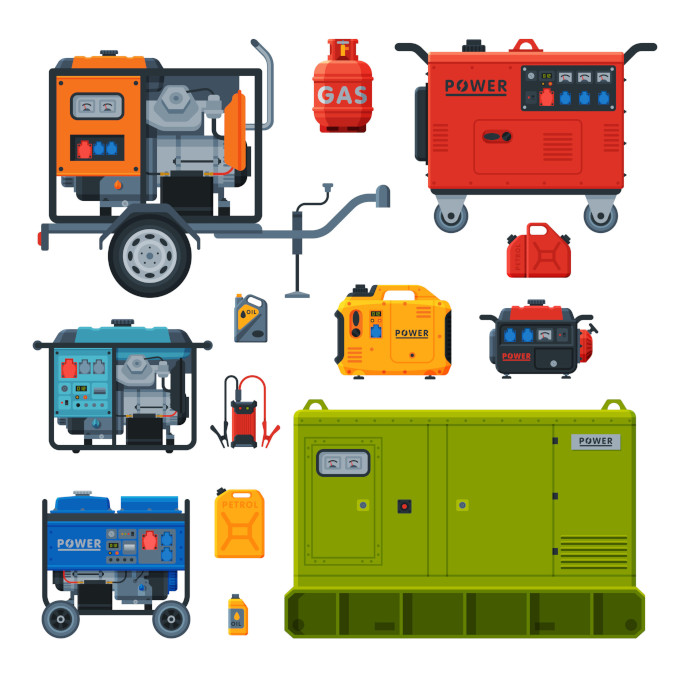
At the time of this post, the most cost-effective generator option is the LPG (liquid propane gas). Compared to diesel and gasoline genset options, they are much quieter and the LPG fuel will never go bad as long as the tank is sound. RVs opt to use LPG gensets due to their quiet operation and cleaner exhaust. If you’re mechanically inclined, finding and refurbishing an old RV propane genset would be the way to go. Obtaining a large propane tank is also an option, where a propane distributor will fill it upon request.
A genset is the most cost-effective option for back-up power because the ICE (internal combustion engine) market is a favored and protected monopoly. However, the fuels you can put in it are not.
I have a Yanmar 3.7kW diesel genset, and I have two diesel vehicles. This runs everything in my home with the exception of my central AC unit. I chose a diesel due to the BTU content of the fuel, the engine’s durability, and the fact that the fuel stores for a long time in the desert without degradation. You can also run it on a combination of propane and diesel when the engine gets old and starts to smoke. This will give you another five years of run time.
A diesel engine will run on waste engine oil and old restaurant fryer oil. If you have a source for fryer oil, the engine needs to be started on diesel and then switched to clean/highly filtered recycled fryer oil. This is due to the fact that the diesel cylinder must be brought up to temp before the French fry grease will ignite in the cylinder. Note that many a municipality forces restaurants to have their fryer oil hauled off instead of it being sold to the general public. Imagine that. The forces of monopoly strike yet again.
Gasoline gensets can be converted to run on ethanol (aka moonshine), wood gas from pyrolysis, hydrogen, propane, and/or natural gas. The reason I’ve avoided gasoline is that it’s very corrosive. It will eventually eat your engine. If you run your gasoline engine on propane, natural gas, and/or H2, the engine’s internals will be pristine clean, and its life span will increase by approximately one-third.
Also note that for whichever genset type you choose, you need to have back-up filters, plugs, points, and oil for long-haul operations. Familiarize yourself with the maintenance of your back-up power solutions. This is not optional.
Natural Gas Emergency Power Back-Up
This is an identical system to the LPG option. You can obtain one via your local gas utility, and a maintenance program will be included in the price. Some of these natural gas emergency gensets actually have a CHP (Combined Heat and Power) option, where the exhaust gases are channeled through a heat exchanger to heat your home’s water—super efficient! Not a BTU goes to waste. Note that this is not a Grid-Tie system, meaning that excess power made is not put back onto the grid. There will be an “Auto Transfer Switch” integrated into the system (see next section for an explanation), and the generator power output will be sized to run your entire home in the event of a power disruption. However, you will still be totally dependent on your gas company’s supply of natural gas.
A Transfer Switch
A transfer switch gives you the ability to connect your alternative power source to your house by isolating your home’s electrical circuits from grid power (see 10-Circuit 30 Amp Manual Transfer Switch Kit). Via three position switches—Grid, Not Connected (NC), and Generator—this device allows you to selectively connect each circuit in your home’s power panel to either the grid or to an alternative power source with—and this is important—its own electrical breaker. This beats running electrical cords in and out of your home to your alternative power source. Note, there are 110 and 220 VAC (Volts AC) options. If you want to run your entire home, you’ll need the 220 VAC switch. There are also automatic transfer switches that will start your back-up power system at the onset of a power outage; these are much more expensive.
Water Turbine or Water Wheel
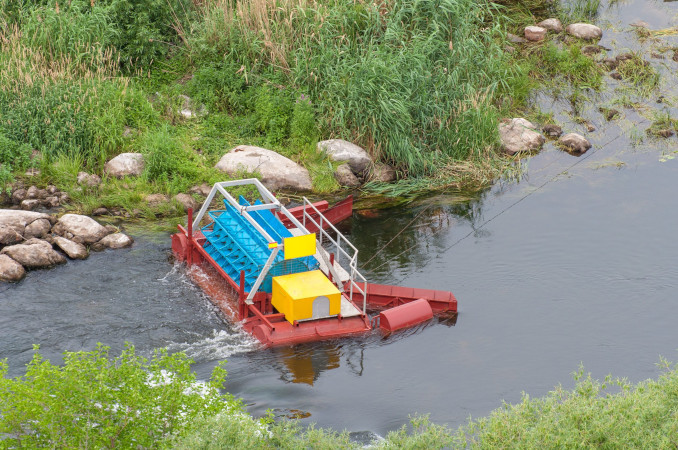
If you’re lucky enough to have a stream, a river, or a pond on a hill that has enough flow—and the local authorities permit it—then a Water Turbine or Water Wheel is the way to go. Depending on your water resource risks (flood, drought, etc.), you should have a 24×7 uninterrupted source of clean alternative power. However, you will be a slave to the state of your water source. What your water source giveth, it might also taketh away. You may need to extract your water turbine or water wheel from your water source during flooding, severe high winds, and/or extreme cold. Having a tractor, forklift, or other heavy equipment to move your system may be a must. You will also need to take special care in running your power cables from your turbine or wheel to your loads. Use of watertight conduit and NEMA-rated electrical enclosures will also be a must.
Next Step: Battery Inverter Combo
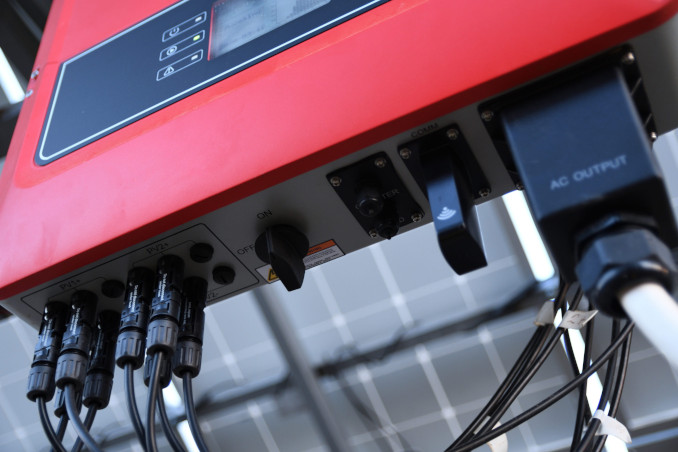
The next step would be a Battery, Charge Controller, and Inverter Combo, where you would integrate your genset into a hybrid system. The genset would charge your battery bank (AC -> DC) via a charge controller, and you could run your heavier loads (washer-dryer, etc.) and charge your battery bank at the same time. There are inverter (DC -> AC) generator integration options where a programmable charge controller operates your genset automatically when the batteries drop below a certain voltage.
This is how diesel submarines operate. A diesel genset charges a battery bank and operates the main motors while it’s on the surface, and then the batteries take over during times when the sub is submerged.
There was a Cajun in Louisiana who had a 4000-square-foot Off-Grid home. His system consisted of a number of forklift batteries, a diesel genset, a charge controller, and an inverter. Now, this was over a decade ago, and he could buy or barter for off-road marine diesel because he lived right on the bayou. Eight months out of the year, he was able to run his home from his inverter/battery bank for three days and on the fourth, he ran his diesel genset. (Note: During the summer he had to run his diesel every other day due to his AC load.) Using a genset in tandem with an inverter/battery bank will get about 70% efficiency from your fuel source. This is why diesel electric locomotives are in use.
Integrating Intermittent Source/s
Off-Grid Solar Photovoltaics
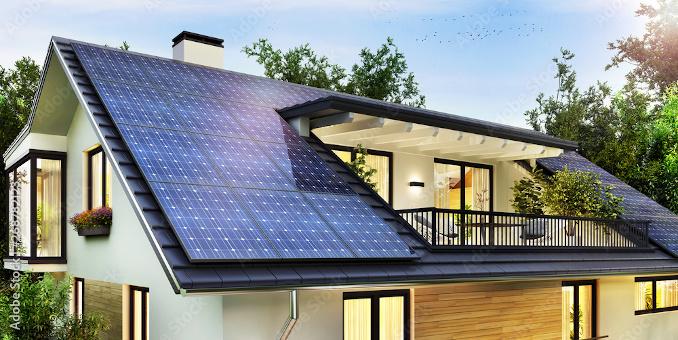
Again, how you install a Solar PV solution will depend solely on local electrical codes and regulations, not to mention the added arm-twisting you may experience from your homeowner’s insurance policy.
In this story, The Risks of Grid-Tie Solar, I chronicled a friend’s trials and tribulations during his installation of a 7kW residential Grid-Tie Solar PV system on his roof this year. This gentleman had worked for a large electric utility for 20 years and did the majority of the installation by himself. However, when he attempted to install a battery back-up option, the roof figuratively fell in. The local Fire Department (perceived fire threat) went ballistic, and so did his insurance company at the mere mention of “Battery Back-Up.” Without batteries, a Grid-Tie system is useless during a blackout. (Another amazing coincidence is how large monopolies work very hard to keep you totally dependent on them.) In this instance, one very notable exception was acceptable—a Tesla Power Wall option was okay with both the local Fire Department and the homeowner’s insurance company. Imagine that!
Most times (depending on your location), when you attach something permanently to your home, you will fall under some type of regulation or code.
So, what are your Off-Grid Solar options? Again, it depends on the above-mentioned limitations. Some state and local entities may have no problems with the installation of an Off-Grid Solar PV system. However, you will also have to check how restrictive your homeowner’s insurance may be.
If you have the same limitations mentioned in “The Risks of Grid-Tie Solar,” then here are my suggestions:
- Build a separate structure for your panels. See featured image at the top of the post.
- Make the structure portable or easy to break down so it can travel.
- Integrate the battery bank, inverter, charge controller, and genset onto a suitably sized trailer so that it, too, can be classified as portable.
- Have a Transfer Switch on your home available to plug in your Alternative Solar/Genset power.
Portable anything is not, at this time, under the same restrictions. If you plan on taking your Solar PV system with you, then you will have to build your trailer platform and the equipment on it to be road-worthy. This does not apply if you just want the ability to move your system short distances around your property.
Wind
Consult the NREL Small Wind Guidebook link in the Additional Resources section below before purchasing a wind turbine.
The two most common varieties of wind turbines are:
- HAWT (Horizontal Axis Wind Turbine)
- Downwind (blades are in back of the nacelles, this stops the blades from striking the tower in high winds)
- Upwind (blades are in front of the nacelles)
- VAWT (Vertical Axis Wind Turbine)
Wind turbines, too, are governed by building and electrical codes. If you go with a HAWT, then you will need a lot of room to put up the tower. In a lot of jurisdictions, you must have nothing under the radius of your wind tower that might be hit if the structure were to fall. VAWTs are meant for tighter areas and do not have the same restrictions as the HAWTs, meaning you can attach them to your roof without running afoul of local codes.
The main problem with wind turbines of either variety is too much wind. All wind turbines have a maximum wind load rating, and after that load is surpassed, it will either go into a stow position or blow away. Please be very studious in purchasing a wind turbine that can handle the worst winds in your place. Having wind turbine shrapnel moving at high speed near your home is not a good idea. Also note that wind turbines are rated by cold temperatures, too. Remember the Texas blackout….
Big Wind Turbine Malfunctions
Here is what happens when a utility grade wind turbine comes apart:
Once you have a properly sized wind turbine installed, you will connect the output of your wind turbine to your charge controller, which will charge your batteries, and your inverter will turn the DC from the batteries into AC current for your household appliances.
Hybrid Systems
Typically, a good Off-Grid system has a combination of Solar or Wind with a standby generator, battery bank, and inverter. This will ensure 24×7 power. Now, if you live in the mountains and it’s relatively sunny, you may want to integrate a wind turbine and solar PV together for your intermittent alternative energy sources with your back-up generator, inverter, and battery bank.
Maintenance
Yes, I’ve said the “M” word, maintenance. If you’re living off-grid, this will be a daily routine, where a walk-around inspection of your system should be done to fend off major malfunctions. What could happen in one day? Rodents. Rodents love—LUV—to eat wires. They can do a lot of damage not only your Off-Grid system but to your vehicle as well. So, a quick daily walk-around inspection of your system is always a good idea. Familiarize yourself with your equipment’s maintenance cycle and perform all the scheduled checks and servicing without fail.
Risks
The most pernicious things you’ll have to deal with are regulations, insurance, and the expense. Regulations and insurance mandates have driven the Grid-Tie model as the only solution. Mr. Global is taking very aggressive actions to make sure everyone is totally dependent on centralized everything. Do what you can when you can now.
Rewards
When I was a kid, I lived in Hurricane Alley. I remember being three weeks without power. No fun. As an adult, I cobbled together a PV system from experimental PV panels and a back-up generator that kept my freezer full of food from defrosting on more than one occasion. Being able to run all my major appliances was an additional perk.
Conclusion
Power and sanitation sets the U.S. apart from the Third World. Power is imperative for food storage, the use of power tools, communications, etc. Do an analysis on what you’re going to need in the event of an emergency and start there.
Additional Resources:
Off the Grid with Thomas Massie, a Master Class
Home Power Magazine / The Off Grid Bible
